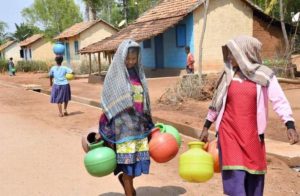Total project should include contribution from State Government for ngo and contribution from other stakeholders. State Government contribution towards land rehabilitation package O&M and external infrastructures like water supply electricity and roads as envisaged in para should be quantified in the DPR.
The provisions for preparation of comprehensive DPRs for Destinations/Circuit Project will be as follows Large Destinations/Circuit Project involving central financial assistance of Rs.25 crore and above will be assisted towards the cost of DPR preparation amounting to 50% of the total cost of DPR preparation or Rs.15 lakh As far as the assistance towards preparation of DPR for smaller projects of destination/circuits are concerned, the assistance will be limited to 50% of the total cost of DPR preparation or Rs. l0 lakh whichever is lower.
Activities/items under State/UT component The State/UT Governments will be fully responsible for the following components of the project Making the land available for development.
Implementation of rehabilitation package where shifting of dwellings or commercial units is required.
However, the Government of India would provide assistance for construction of Tourist Reception Centers including shopping complexes to house the displaced shops.
Operation maintenance and management of the assets created. External infrastructure like Water Supply Electricity and Roads.
The following works may be taken up under the Scheme of Central Government. Improvement of the surroundings of the destination. This would include activities like landscaping development of parks fencing compound wall etc. Illumination of the Tourist destination and the area around and SEL Shows etc. Providing for improvement in solid waste management and sewerage management Public Conveniences etc. obtain step by step information from ngo consultancy.
Nearly two billion people have no access to modern sources of energy. Increasing energy access is one of the key ingredients for human development. At the same time, energy-related carbon dioxide (CO2) emissions are also expected to increase over the next two decades, especially in developing countries.
Clean energy subsidies are, therefore, being used to support two simultaneous transitions: from no energy to energy access; and from fossil fuel-based energy to a low-carbon energy pathway. Subsidies need not to be the only way to support these transitions. For instance, a tax on fossil fuels could make some clean energy sources more viable. Moreover, international trade rules frown upon the use of subsidies, even if they are for clean energy.
These rules exist to prevent distortions and discrimination in international trade. So, while one logic suggests that subsidies for clean energy could be one response to the climate change and energy access challenge, another dictates that many types of subsidies must be avoided to comply with trade rules.
Development has also occurred and is occurring, in high-risk areas. This is often because of government insurance programs that include society registration offering rates that do not reflect risk, inadequate information about risks and the non-enforcement or lack of regulations around risk mitigation. Examples include increases in offshore oil production, homes built in wildfire-prone areas and building on floodplains. policies that may include grant-in-aid. Policies intended to mitigate risks, or compensate for development in high-risk areas, sometimes fail to help. For example, most of the damage from Hurricane Katrina resulted from the breakdown of the levee system, a man-made construct designed to protect low-lying property.




